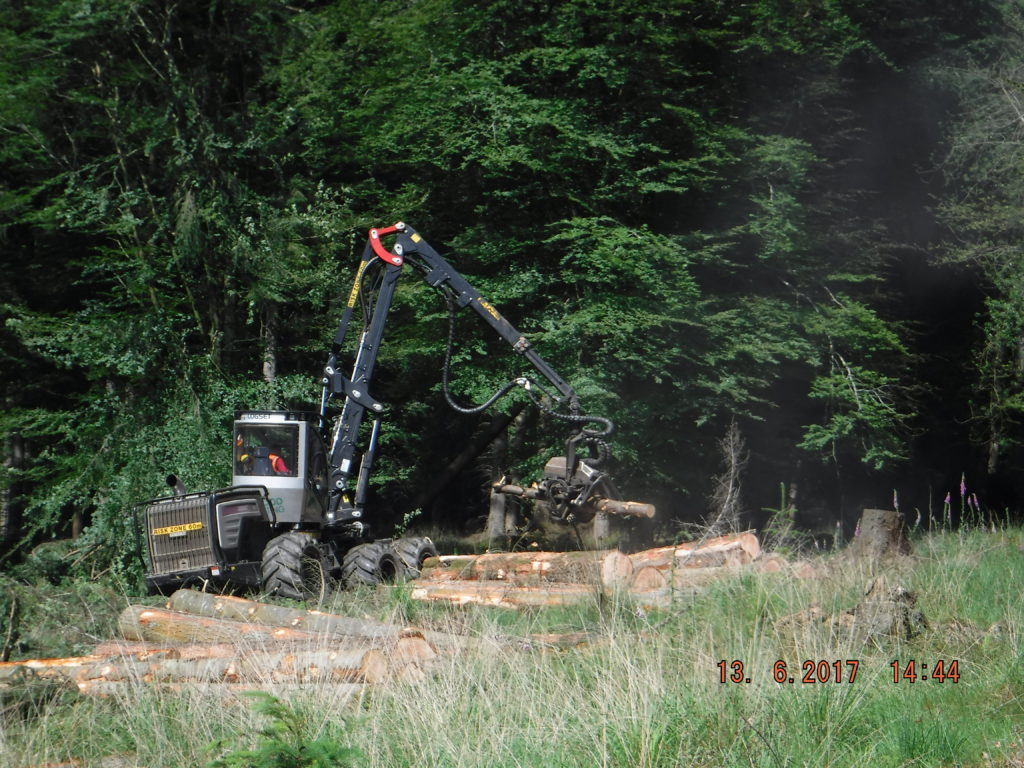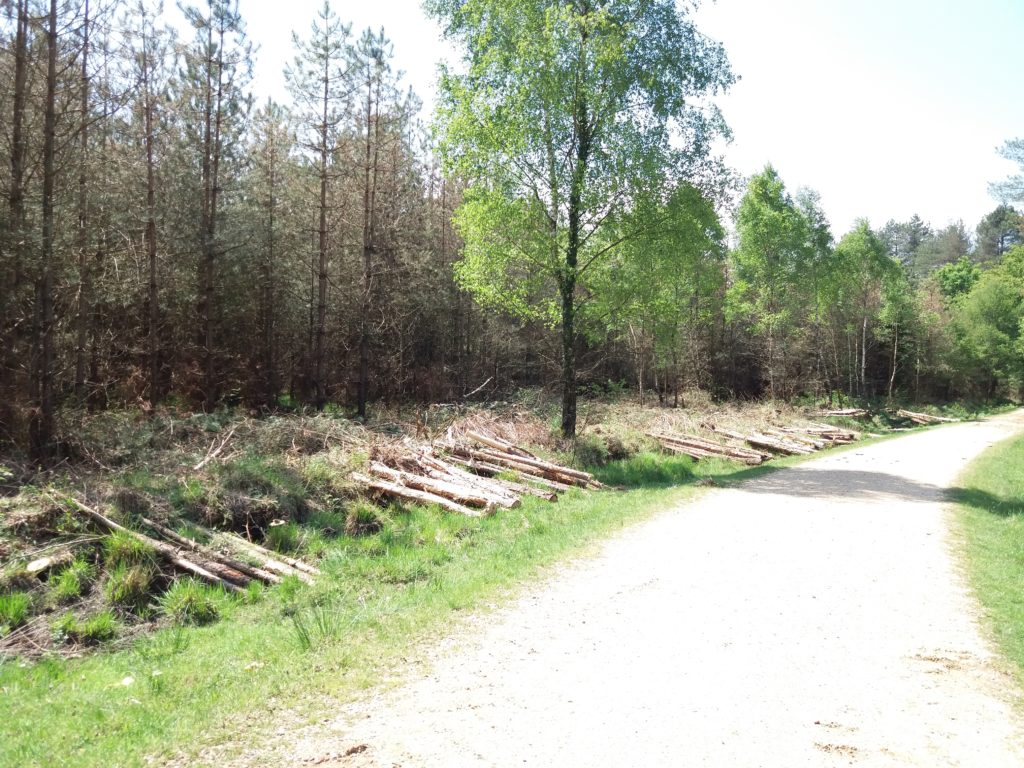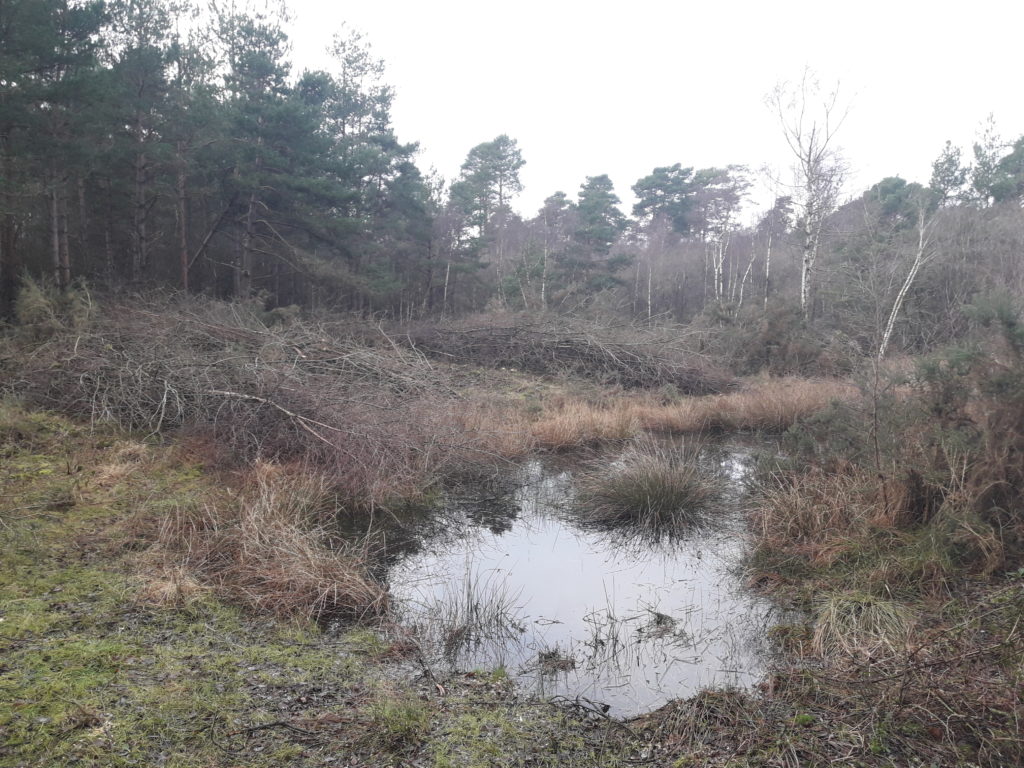News from Forestry England
Forestry operations begin at Warren Heath/Heath Warren and Bramshill
The working forestry cycle has returned after five years to Warren Heath/Heath Warren. We are now planning the next routine thinning of the conifer plantation trees, which will benefit and improve the area for conservation and public access, as well as promote growth in the remaining trees. The timber removed will be supplied to the local building and fencing industries.
To achieve this work in a structured way, each woodland has a Forest Design Plan (FDP), which guides habitat management and identifies the future character of the area and the timescale of habitat change or forestry operations. This is planned over a ten-year working period based on a vision of the area in 100 years’ time. This enables us, Forestry England (FE), to manage and improve the Site of Special Scientific Interest (SSSI) habitat conditions of the area effectively and to comply with our legal obligations to the felling licenses (issued by Forest Services). Natural England (NE), the lead governmental conservation agency, oversees and steers our SSSI work to ensure that Bramshill SSSI remains a valuable, healthy and diverse array of habitats connected on a landscape scale. Recently we have been given a “favourable condition” for this SSSI by NE. We are also obliged to consider the broader interests of its Special Protection Area’s (SPA) species and the local community (including walkers, cyclists and horse riders) too as part of our planning processes.
Warren Heath/Heath Warren was once a mosaic of open heathland, wetlands (mires and bogs) and scattered woodland (clumps of pine, oak, birch and holly copses) before the 1920’s, when it was fenced and planted mostly with conifer including Douglas Fir, Scots, Corsican and Lodgepole Pines to satisfy the country’s timber demands needed to rebuild after the 1st World War.
Things have changed in many ways since those times and in more modern times the area is now recognised for its biodiversity and ecological value. The area holds a good numbers of Nightjar and Woodlarks, along with a small population of Dartford Warblers (these are of course our SPA species), and this has driven our policy of continuing to create and maintain open space and a regime of clearfelling of mature plantations and restocking with new trees. This felling and replanting cycle creates the essential habitat conditions for the SPA species, as well as a sustainable timber supply, with a typically 60-year turnover for conifer.
Coming right up to date, over the last two months myself and some of my fellow FE colleagues (covering various disciplines including forestry, conservation and recreation) have been looking at what further opportunities we have for developing the woodland towards its 100-year FDP objectives. Of course these will only be baby steps and will not cause too much change on the ground for local users. But we hope that we can make improvements over the next five years, through forestry, civil engineering and conservation tasks at Warren Heath/Heath Warren for all to enjoy and value.
Some of this work will include widening rides and track edges to create sunny spots for plants to grow such as heather and gorse, these in turn producing nectar for insects such as butterflies and moths. This work will also help with drying out muddy tracks and paths. As young trees and shrubs develop within the thinned conifer crop, further habitat for birds and small mammals will attract owls and hawks to visit and hopefully nest too. You may have noticed the work to cut areas of natural regenerated trees and gorse across the Bramshill Forest. This is part of the ongoing management of the heathland habitat, which has been created out of parts of the plantation woodland to improve the area for the specialist heath plants and wildlife that thrive in these areas. Opportunities will be taken to open up water courses and ponds to enhance their wildlife value.
Some may have seen coloured paint markings on trees, these are used to guide forestry work and deliver this plan, and as operations gets under way, you will see how this marking helps. Please look out for and comply with any signage on your visits to this forest, as the forestry teams are carrying out their essential work. We will also be putting up information notices to inform the public of our work and the wildlife benefits that will be achieved in time.
Simon Holloway
Wildlife Ranger, Forestry England
#HeathlandInFocus



